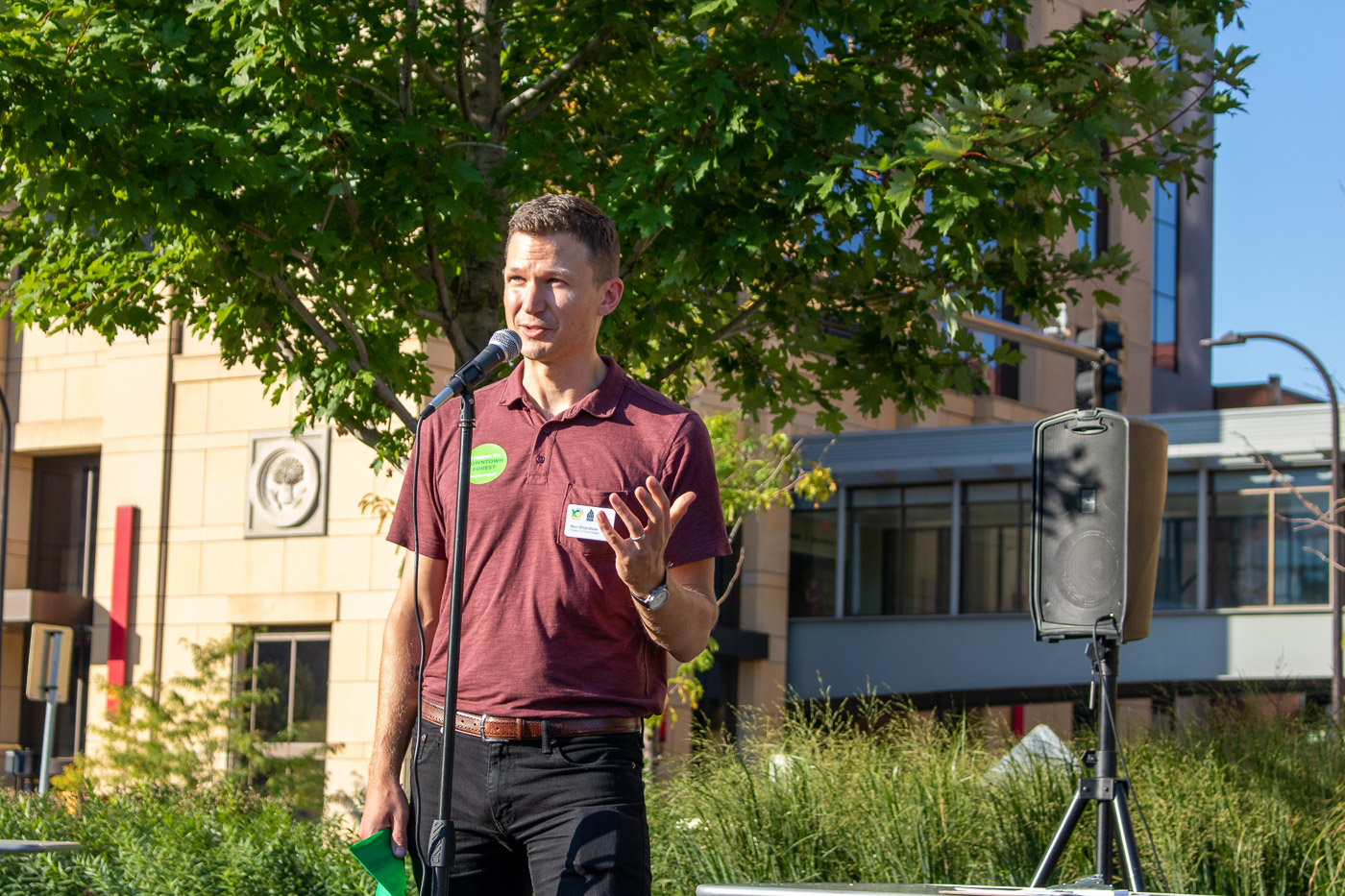To Protect Its Greenery, Downtown Minneapolis Turns to Smart Salting
Frequent visitors to Downtown Minneapolis are all too familiar with the crunch of salt granules beneath their feet. Downtown sidewalks and plazas are often covered in ice-melt products all winter long — even when there’s no ice left to melt. The salt sticks to people’s shoes, gets tracked into buildings, and eventually gets plowed, shoveled and splattered into seemingly every crevice of the city.
It makes sense that over-salting would be a challenge downtown. With throngs of pedestrians to keep safe — and potential lawsuits to avoid — downtown property managers have clear incentives to err on the side of caution in applying deicing chemicals. Many know they’re using more than is necessary, but they feel boxed in by the common public misperception that more salt is always better.
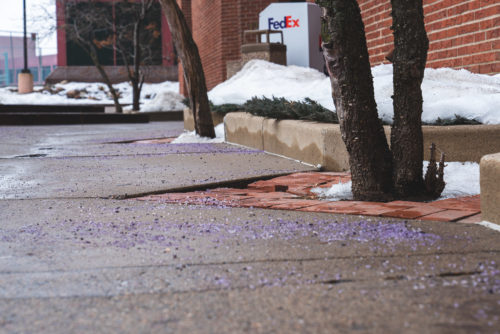
All that excess salt has become a problem. Apart from creating a toxic brine that pollutes the Mississippi River via the stormsewer system, it’s also damaging downtown infrastructure. In particular, it’s contributing to higher failure rates for downtown’s new street trees and other landscaping. That’s a major challenge for the Mpls Downtown Improvement District (DID), which has been leading the charge to rebuild the downtown tree canopy and spread the many benefits that trees provide.
Ben Shardlow, the DID’s director of urban design, said more dialogue about the relationship between winter maintenance practices and summer landscaping expenses is needed as generational investments are being made in beautifying downtown’s public realm.
“Basically, the wrench in that machinery is salt,” Shardlow said, noting that DID is charged by the commercial property owners of downtown with a mission to make downtown greener and is funded primarily by a special service district charge on those properties. In service of that mission, DID is working to protect those landscaping investments from known challenges like over-salting, even if that requires hard conversations about competing priorities.
On December 13, the DID held a Smart Salting for Property Managers training event, inviting managers for several large downtown properties. Among those in attendance were representatives of the Minneapolis Convention Center, the University of St. Thomas, the Minneapolis Central Library, and Denison Parking (which manages five parking ramps downtown).
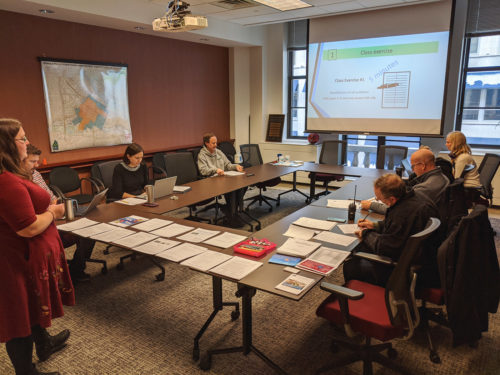
Funded by the MWMO and led by trainers from Fortin Consulting and the Minnesota Pollution Control Agency, the training is designed to educate property managers and groundskeepers on the principles of smart salting, which emphasizes applying the correct deicing chemicals in the correct amounts for the given weather conditions. The idea is to eliminate excess or unnecessary salt usage without negative impacting public safety.
Smart salting has proven to be a successful strategy for many businesses and other organizations, saving them money both on salt as well as infrastructure maintenance costs. Edina Public Schools was able to reduce its salt usage by 88 percent, saving the district direct costs of $10,000–$12,000 per year. The Mayo Clinic was able to reduce its salt usage by 60 percent, and Park Nicollet Health Services cut their salt application down by more than half.
“That’s one thing that’s unique about this pollutant is that it’s really a win-win you’re able to reduce,” said Lauren Schulzetenberg, a trainer for Fortin Consulting. “It saves you money and also helps our environment, and you can’t say that about a lot of the pollutants that we deal with.”
Why Salt is a Major Challenge in Greening Downtown Minneapolis
Over the last 10 years, the DID has planted tens of thousands of annuals and native perennials, and has advocated for hundreds of new trees that have been planted throughout downtown Minneapolis. It’s part of their goal of enhancing the greenery and public realm of downtown, softening the hard edges of a landscape dominated by pavement and buildings.
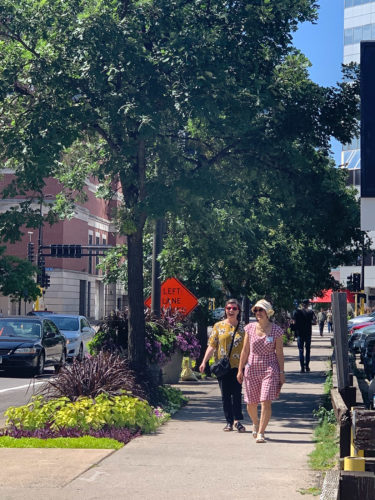
In the past, the DID accomplished this mostly by installing vegetation in planters and hanging baskets. But those methods can be expensive, sometimes costing $6,000 per year to plant, water and maintain a half-dozen standalone planters on a given block face. With a district of more than 120 blocks, the DID has been seeking more cost-efficient greening opportunities.
In recent years, the DID has supported capital projects that better incorporate greenery and stormwater management provided by trees into actual downtown street designs. Shardlow said street reconstructions like Nicollet Mall and Washington Avenue provide the DID an opportunity to invest in more impactful greenery downtown without dramatically increasing maintenance costs.
“In a street reconstruction project, a tree can be planted with outstanding infrastructure for future root growth at essentially no added project costs compared with an empty sidewalk,” Shardlow said. “Compare that ripping up a sidewalk specifically to plant a tree in the same fashion, which can be a $5,000 or $10,000 project.”
The problem is that the survival rate for these new landscaping investments is less than optimal. In some cases, trees planted in the spring haven’t survived the summer. And although there are several factors at play, Shardlow said it’s increasingly clear that chlorides from salt and deicing compounds are taking a toll on downtown greenery. And if soil tests prove that the salinity of soil is beyond acceptable levels, warranty claims to replace that landscaping can be null and void.
The DID has taken a number of steps to address these challenges. It formed Greening Lab, a partnership with the MWMO, the Minneapolis Park and Recreation Board (MPRB), Green Minneapolis and the Downtown Minneapolis Neighborhood Association. This fall, Greening Lab recruited volunteers to do a downtown tree census, measuring, tracking, and recording detailed information about the performance of 3,343 trees downtown.
The MWMO also recently collaborated with DID and Greening Lab on their innovative “text-a-tree” program, which allows users to send SMS messages to individual trees to learn about the benefits they provide. The MWMO and the DID also partnered on a pilot project to incorporate trees and plants in a new way into downtown street design.
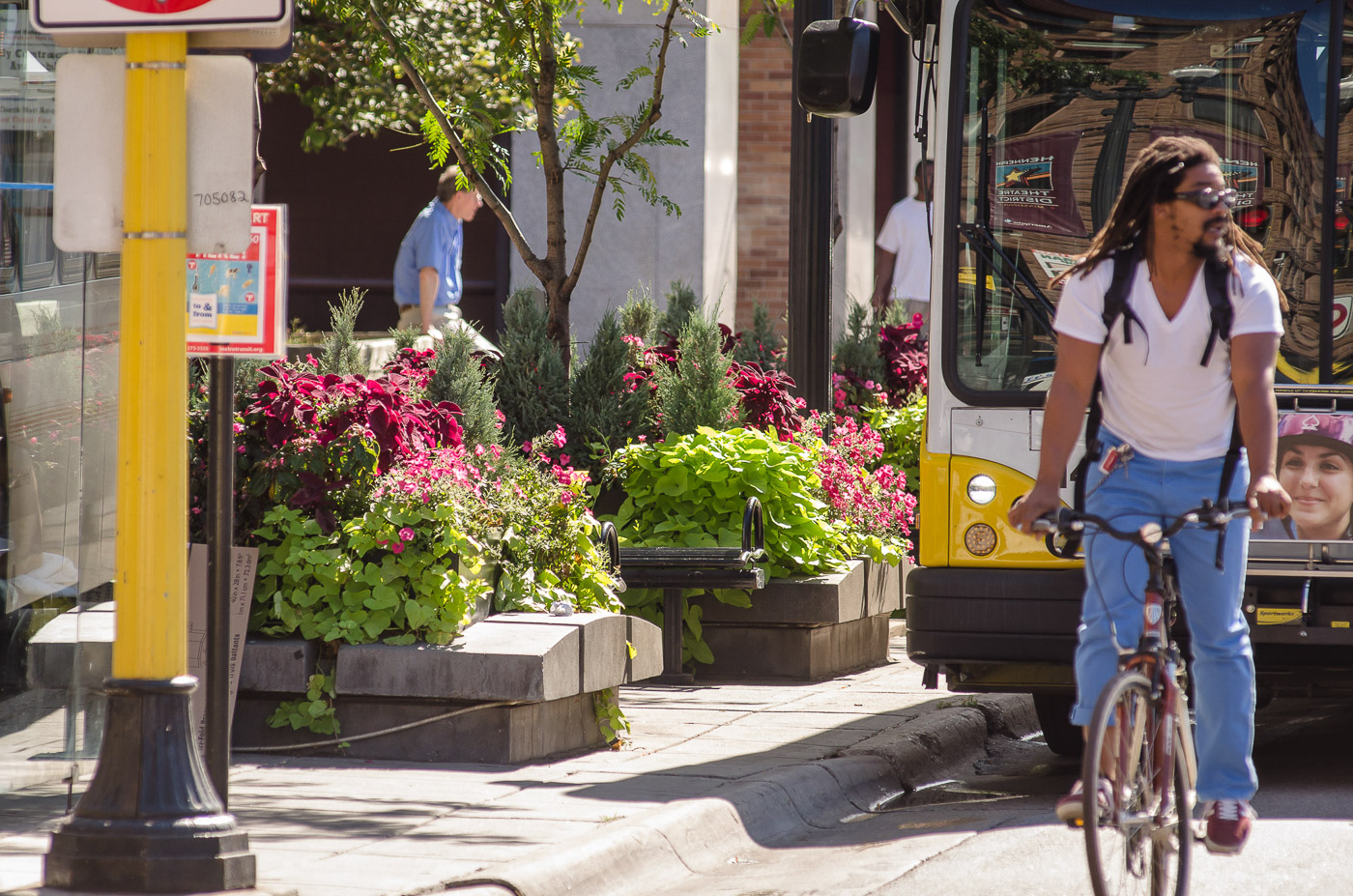
Trade-Offs for Property Managers
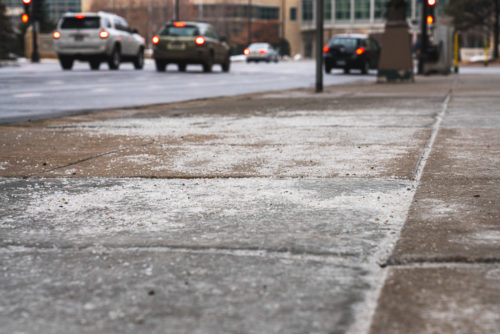
Downtown property managers understand the destructive power of salt. All winter long, it erodes their hardscapes, splashes on their building exteriors, kills their landscape plants, ruins their carpets and wreaks havoc on their floors and entryways. Most would happily support using less salt, but for one big problem: public perception.
Lynnette Muhich is a vice president and general manager at JLL, and manages a retail-heavy 500,000 square foot downtown office building along Nicollet Mall. She said many visitors expect to see the ground around her buildings blanketed in salt granules, even if it’s too cold for deicing chemicals to actually work. If people think they see too much ice on the ground or not enough salt, she gets complaints — and sometimes, threats of lawsuits.
“The perception is, ‘You guys aren’t salting enough because there’s ice on the ground,’” Muhich said. “We had slips and falls that were occurring, and people were coming to us and telling us we weren’t using enough salt.”
Faced with a choice between over-salting their properties and getting sued for negligence, many property owners and snow removal companies choose to blanket every hard surface with enough salt to make it amply clear that they’re doing everything in their power to melt the ice. Muhich said even if her company prevails in a lawsuit, the cost of fighting it in court represents a significant loss.
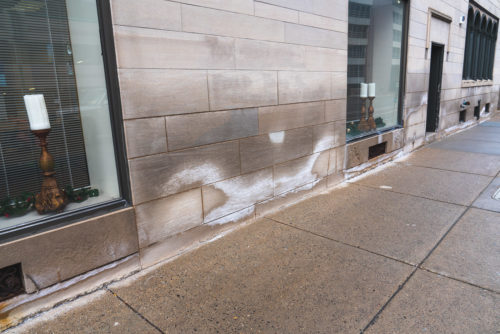
“If the perception is I didn’t do enough, there’s going to be a bigger possibility that I’m going to get sued. Whether or not I can fight that or not is irrelevant at that point, because I have a lawsuit that I’ve got to go deal with,” she said.
Environmental advocates are hopeful that new legislation could protect property managers from frivolous lawsuits and encourage them to adopt smart salting practices. A bipartisan bill in the State Legislature would limit the liability of salt applicators who are trained and certified in MPCA best practices for snow and ice removal. The bill has progressed through several House committees and has been introduced in the Senate.
More public education is also clearly needed so that residents understand the limitations of salt and other deicing chemicals and the need to protect themselves in ways like wearing winter boots that provide traction. Shardlow said he hopes that the Smart Salting training is just the beginning of a larger dialogue downtown about these challenges, and that more outreach to downtown stakeholders can follow in the near future.
What You Can Do to Help
Help us spread the word about the true costs of over-salting on our environment and infrastructure. Let your friends and neighbors know that more salt does not equal more melting, and share our tips for eco-friendly snow and ice removal.

